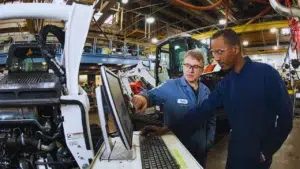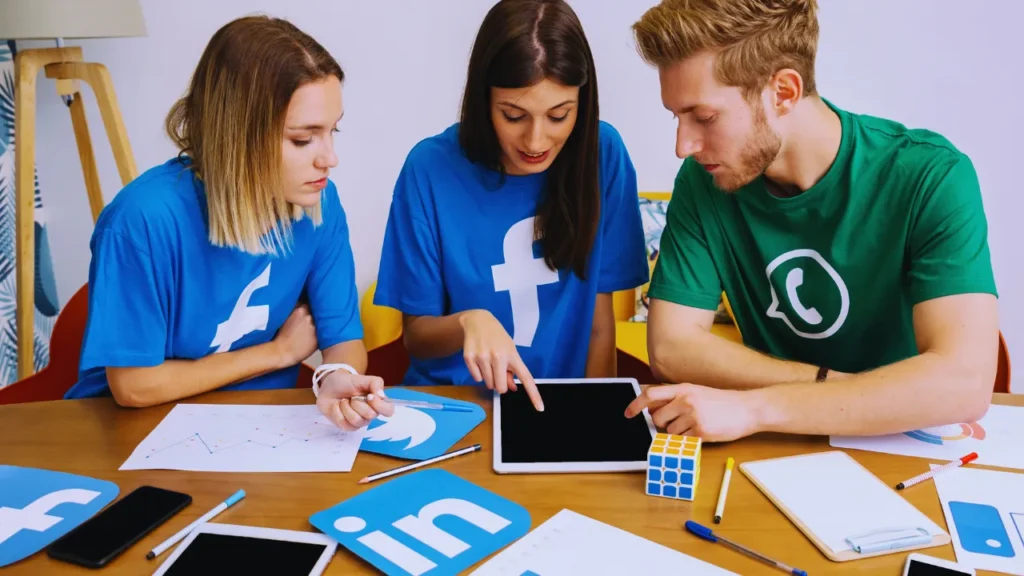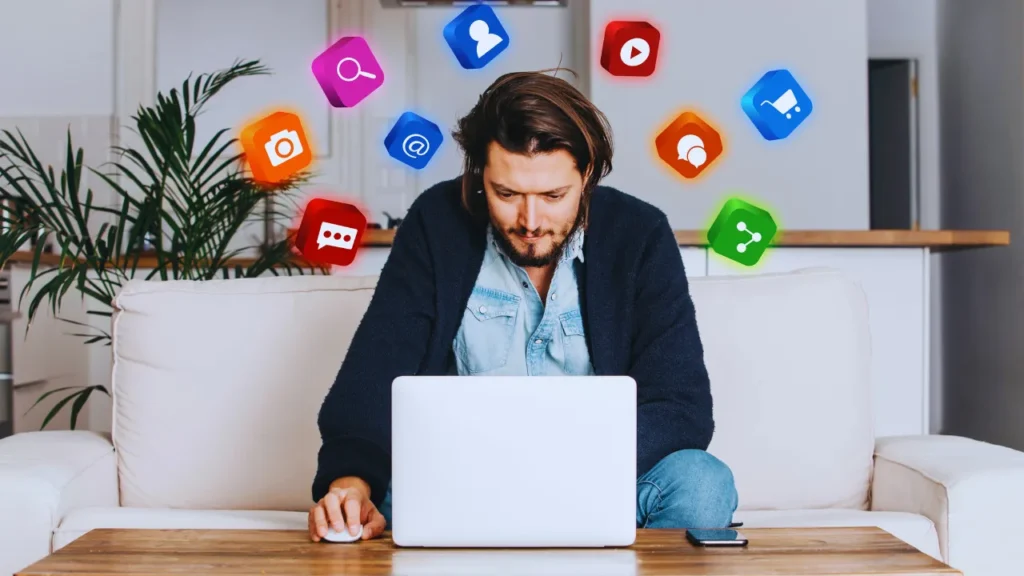Technology examples we frequently don’t even recognize how much we rely on technology since. It has become so ingrained in our daily lives. Various technologies make our personal and professional duties easier, faster. It is more efficient from the time we wake up until we go to bed. This post will guide you through several examples of work-related. Real-world technology that influences our world daily.
Common Technology Examples in Everyday Life

We communicate, snap pictures, shop, and even do our banking on our cellphones. We wear smartwatches to monitor our health. Metrics and to remind us to maintain an active lifestyle. While voice assistants like Alexa or Siri manage lights and alarms at home. Navigation apps like Google Maps make travel more efficient. These are just a few instances of how easily technology is incorporated into our daily lives.
Technology Examples in Work Environments
Modern workplaces are powered by technology as well. Advanced technology solutions are used in offices, hospitals, and retail establishments. Even farms to increase accuracy and production.
| Industry | Technology Example | Purpose |
| Office Work | Project Management Tools | Helps teams collaborate and track progress |
| Retail | POS Systems | Speeds up billing and inventory tracking |
| Healthcare | Electronic Health Records | Secure and organized patient data |
| Agriculture | Drones | Crop monitoring and spraying |
| Logistics | GPS and RFID | Fleet tracking and package monitoring |
Asana or Trello, for instance, facilitate task coordination for teams. To maintain patient histories securely and easily accessible, hospitals rely on electronic records. While GPS technology assures efficient transportation in logistics. Organizations, drones are used by farms to examine fields. These tools are all changing industries to become more efficient.
Impact of Technology on Daily Communication
Communication is one of the most obvious elements of life. That technology has altered. Video calls and instant messaging apps have replaced landlines and mail. People can interact instantly across countries using tools like. Microsoft Teams, Zoom, and WhatsApp.
This has transformed not only private discussions but also the way companies operate. Team members can now work together globally without leaving. Their homes thanks to the prevalence of remote meetings. It’s economical, effective, and helps save time. That would have been lost on slow communication or travel.
Technology in Education: Bridging Gaps and Enhancing Learning

The introduction of new technologies has significantly changed education. Digital whiteboards, online courses, and e-learning sites like. Coursera and Khan Academy have opened doors for people from all over the world.
While virtual reality is being used to create immersive learning experiences. Children now use iPads in the classroom. For pupils in far-flung places, this not only closes. The gap but also improves the quality of education. Instructors have access to a wealth of digital instructional. Resources, interactive tests, and lecture recordings.
Examples of Technology in Health and Wellness

In rural places, where a specialist physician. Might not be readily available, telemedicine is very helpful. Whether they are controlling blood pressure, diabetes, or mental health. Applications give users the ability to take charge of their lives.
| Tech Tool | Function | Benefit |
| Fitness Trackers | Monitors physical activity | Encourages healthy habits |
| Telemedicine Platforms | Online doctor consultations | Access to healthcare from remote locations |
| AI Diagnostic Tools | Analyze patient data for early diagnosis | Faster and accurate treatment planning |
| Health Apps | Track diet, hydration, and sleep patterns | Personalized health insights |
| Robotic Surgeries | Precision in operations | Minimizes errors and enhances recovery |
Smart Homes and Internet of Things (IoT)
An excellent illustration of how daily life may be automated is found in smart houses. IoT is transforming the way we interact with our surroundings. That alert you when your groceries are about to expire to lights that turn off on their own.
Smart thermostats and other devices assist control energy use. Sensors and security cameras guard our houses. These instruments are intelligent and ecologically conscious in addition to being practical. The potential for automation is almost limitless as homes become more interconnected.
Technology in Entertainment and Leisure

Technology provides a wide range of possibilities for relaxing. We have access to a limitless amount of content. Thanks to smart TVs, video games, and streaming services. By enabling more immersive experiences, virtual reality (VR) has elevated gaming. Movie watching to new heights.
With the rise in popularity of e-readers and audiobooks. Even more conventional hobbies like reading books have gone digital. Music is curated by platforms such as Spotify according to your taste or mood. Making entertainment more individualized than ever.
Digital Payment Systems and Online Banking
Digital banking and payment apps have made money management simpler. These technologies provide security, speed, and convenience. whether you’re using mobile banking apps to pay your bills, PayPal to transmit money, or a QR code scanner at a café.
Digital wallets, such as Venmo, Apple Pay, and Google Pay. Extensively used and facilitate quicker and easier cashless transactions. Additionally, they provide tools like alarms and cost tracking. Assist users in more responsible money management.
Artificial Intelligence and Machine Learning at Work
AI is becoming a key component of how businesses function and is no longer merely a trendy term. AI-driven solutions simplify tedious operations, chatbots respond to consumer inquiries. Predictive analytics assist businesses in identifying patterns.
AI is used by HR departments to screen resumes, and machine learning. Enhances recommendation systems (think Amazon or Netflix). As these technologies develop, they will continue to replace labor-intensive. Prone tasks freeing up time for creative and strategic thinking.
Stay Updated and Adapt
Since technology is developing more quickly. than ever before, being informed is now required rather than discretionary. Whether you’re a professional, student, or business owner, having. The ability to adapt and be tech-savvy can make all the difference. To improve your productivity and quality of life. Choose what suits you best and continuously try out different tools.
Wrapping Up
Every aspect of contemporary life is impacted by technology, including. How we communicate, learn, work, and even unwind. Cloud-based work platforms, smart home devices, and wearable health monitoring. A few examples of how technology is continuing to influence our future. We may live more connected, productive, and pleasurable lives. If we accept these changes and learn how to use them wisely.
FAQs about Technology examples
What are some typical examples of technology employed in the workplace?
Commonly used tools include online storage like Google Drive. collaboration applications like Slack, and project management systems like Asana. They facilitate safer file sharing, workflow management, and enhanced teamwork. To improve user experience, a lot of companies also use. Chatbots and other customer care solutions. Modern operations cannot function without these instruments.
What everyday effects does technology have on our personal lives?
We communicate, navigate, shop, and pass the time on our iPhones. While smart home appliances manage security and lighting, wearables monitor our health metrics. On-demand entertainment is offered by streaming platforms. Technology helps us save time and maintain organization. Personalizing and facilitating everyday tasks.
What function does technology currently serve in education?
Education is undergoing a revolution thanks to digital tools like tablets. virtual classrooms, and e-learning platforms. Students can engage in interactive activities, access materials around. The clock, and attend classes virtually. By reaching students in remote or impoverished locations, technology closes educational gaps. Makes learning more interesting and accessible.
What role does technology play in the medical field?
A lot of telemedicine platforms, diagnostic instruments. Electronic records are used in healthcare. Wearable technology and fitness applications aid in tracking health indicators. While artificial intelligence capabilities enable physicians to make precise diagnoses. Robots help with surgery, improving the accuracy of the process. In general, technology enhances patient care and efficiency.
How do smart homes operate, and what are they?
IoT devices are used in smart homes to automate and regulate. Security, heating, and lighting systems. Voice-activated assistants, smart thermostats, and networked appliances are a few examples. These solutions provide more convenience, energy savings. Security, and are frequently controlled by apps.
What makes digital payments more convenient and safe?
Carrying cash is less necessary. Thanks to digital payment methods like PayPal and smartphone wallets. Features like OTP verification are frequently included in encrypted transactions. Financial management is made simpler and more transparent. The ability for users to track spending. Set restrictions and even plan regular payments.
What technology should we watch out for in the future?
Technologies like 5G, blockchain, and augmented reality. The potential to completely transform several businesses. Blockchain guarantees safe online transactions, AR will revolutionize gaming and education. 5G makes faster internet possible for seamless connectivity. Individuals and businesses can remain ahead of the curve by following these trends.

















